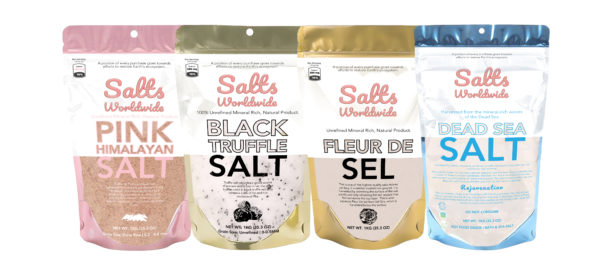Fleur de sels are small, freshwater pearls found primarily in coastal areas around France and the Loire Valley. They form along coasts and bays in combination with the much larger (though less rare) fleur de lis. As fleur de sel is the most common word for fleur de sel salt in general, we’ll use that term throughout this article. The best fleur de sel salt is usually prepared from seawater pulled from the shores of southwestern France along the Loire River. This preparation is called fleur de sel salt, but “sal” is typically used to describe the salty condition of the water as well as any garnish used to enhance its flavor. Because some varieties of fleur de sel are made from very salty water pulled directly from the shores of southern France, it is sometimes difficult to obtain this variety outside of France or during peak seasons (Christmas and other vacation festivals in France).
Fleur de sel is actually a colloquial term that refers to fleur de lis, the fleur-de-lis flower tattooed on people’s foreheads in place of the fleur de sel salt used above. The fleur de lis is actually a flower, though it can also be applied to tattoos. It is tattooed on people who have given up conventional methods of tattooing (largely because they are unwilling to have large, expensive tattoos created especially for them). As a result, fleur de sel often symbolizes a kind of freedom from convention. But although the fleur de lis may no longer be legally required to be tattooed, it remains quite fashionable for those who do have it: it gives an appearance of free-flowing skin, and it gives the wearer instant personality boost.
So how did fleur de sel become so beloved of celebrities? It seems to have developed particularly close ties with celebrities during the 1990s. Fleur de lis jewelry became especially popular with fashionistas at this time. And during that decade, there were many famous celebrities whose facial tattoos bore some version of the fleur de lis: Brad Pitt, Britney Spears, Madonna, and even odie subtler! All of these women sported different fleur de lis variations on their faces, arms, legs, and shoulders. And all of them had something in common: their faces all featured fleur de lis inscribing designs in intricate geometric patterns.
When you look back into history, you will find that fleur de lis designs date back to ancient times. In fact, they are traceable as far back as the early thirteenth century. Some believe the design was derived from a technique of decorating fish scales with flat pearls. The beauty of the fleur de lis, in other words, is that it doesn’t need to be worn only by celebrities: it can be equally elegant and tasteful on just about anyone.
Although fleur de sel can be made from numerous different materials, one of the most popular types is fleur de sel salt. This type of salt is commonly used as a finishing salt on anything from freshwater pearls to saltwater cultured pearls. In fact, its popularity has grown in recent years due to the growing interest in all things natural, alternative, and environmentally-friendly.
Natural seawater contains an extremely high concentration of minerals, including sulfur, magnesium, and calcium. Because of its unique properties, seawater is used as a natural conditioner for foods and as a natural cleaner for skin, hair, and clothes. One of the most noticeable characteristics of sea salt is its distinctive flavor. Not only does it taste delicious, but its distinctive flavor makes many people turn to seawater for the taste of salt in their food or in their bath water.
A lot of people use sea salt in order to achieve the same rich taste in their food and bathing water. Fleur de sel on the other hand, also known as the “sea salt” in France, has a very salty taste. This salt’s distinctive flavor comes from its crystals, which have a very unique structure. Crystals from fleur de sel are structured differently than those found in table salt or other salts. The crystals found in seawater are hexagonal and arranged in a way that resembles a tree branch with each crystal pointing outwards.
Despite the uniqueness of fleur de sel’s taste, the salt still commands a high market price. This high price tag comes from the demand of people for naturally-occurring salt, especially because of its fresh, salty taste. Many hotels and restaurants in France, as well as in various parts of Europe, have salt bars where the consumer can choose their salt based on their taste or the season. Other salts such as potassium nitrate and sodium chloride are sold in the market as well, but they are not as commonly used in cooking as fleur de sel. As a result, many chefs choose this type of salt for their recipes because it tastes great and is easy to use.



